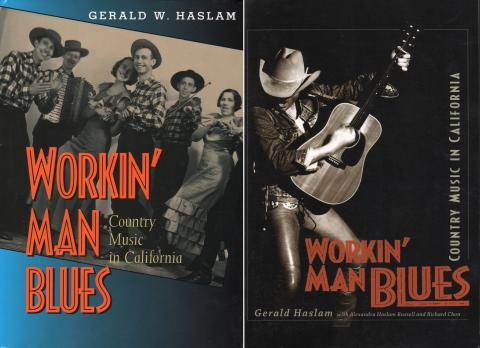Workin' Man Blues: Country Music in California
Format:
- Book: Non-Fiction
Gerald W. Haslam, with contributions by Alexandra Haslam Russell and Richard Chon
Winner of the Ralph J. Gleason Award from Rolling Stone Magazine, BMI, and New York University
Winner of the Certificate of Commendation from (American Association for State and Local History)
Hollywood singing cowboys, Bakersfield honky-tonks, rodeos, and hillbilly radio shows, California has been fertile ground for country music since the 1920s, nurturing a multitude of talents from Gene Autry to Glen Campbell, Rose Maddox to Barbara Mandrell, Buck Owens to Merle Haggard.
In this affectionate homage to California's place in country music's history, Gerald Haslam surveys the Golden State's contribution to what is today the most popular music in America. At the heart of the music he finds and illuminates the lives of the working-class men and women who migrated to California during the Dust Bowl, exploring their Hoovervilles and other locales from which they had been turned out, shut down, or otherwise told to move on.
Reviewer Comments
|
"Lively and well-informed." "Workin' Man Blues is possibly the most brilliantly astute and thorough examination ever written about country music in California and the impact it has had in our lives and on our culture. I'm extremely flattered to be even mentioned in such august company." Rock Lit: "Talking Books With Chris Shiflett. What book would you recommend to fans of your music?" |
|
Workin' Man Blues was published in 1999, and is available from the University of California Press [Click Here!]. The first edition was hardcover, and features a photo of The Crocketts on the slip cover. The later paperback edition features ? on the cover. |


